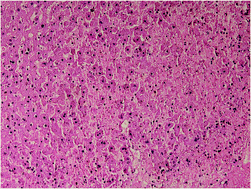Induction of mild therapeutic hypothermia in treatment of aluminium phosphide poisoning; an experimental study
Abstract
Background: Exposure to aluminium phosphide (ALP) is a common cause of poisoning from agricultural pesticide exposures in some parts of the world. The absence of a specific antidote results in very high mortality due to acute ALP poisoning. The effect of induction of mild therapeutic hypothermia (MTH) on survival during poisoning from a lethal dose of ALP has been evaluated in the present study. Materials and methods: Male Sprague-Dawley rats were randomly divided into 4 groups. The first group received only the vehicle of ALP. The second group (SHAM group) received no drug. The third and the fourth group were given ALP in LD50 dose by gavage with an orogastric cannula. The core body temperature of animals in the fourth group was kept in the 32–35 degree centigrade range during the experiment (24 hours). The survival rate and histopathology of liver and kidney were used to evaluate outcomes. Findings: Mean survival time in group 3 was 9.143 hours (3.527–14.759; 95% CI), while it was 18.182 (14.730–21.634; 95% CI) in group 4. A Kaplan–Meier test showed that the difference between the groups was statistically significant (chi-square 15.408, p-value = 0.0001). The treatment group also experienced less histopathologic change attributed to ALP poisoning in their kidney and liver compared to the control group. However, only the difference in kidney histopathology was statistically significant (p-value = 0.016). Conclusion: Results of the current study showed that MTH may be beneficial in the treatment of acute ALP poisoning in rats in terms of survival rate and histopathologic changes in kidney and liver. Conducting experiments in humans is suggested in order to determine its true therapeutic value.


 Please wait while we load your content...
Please wait while we load your content...